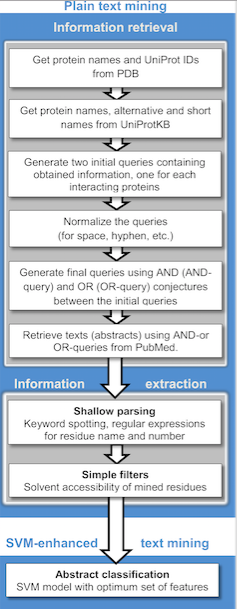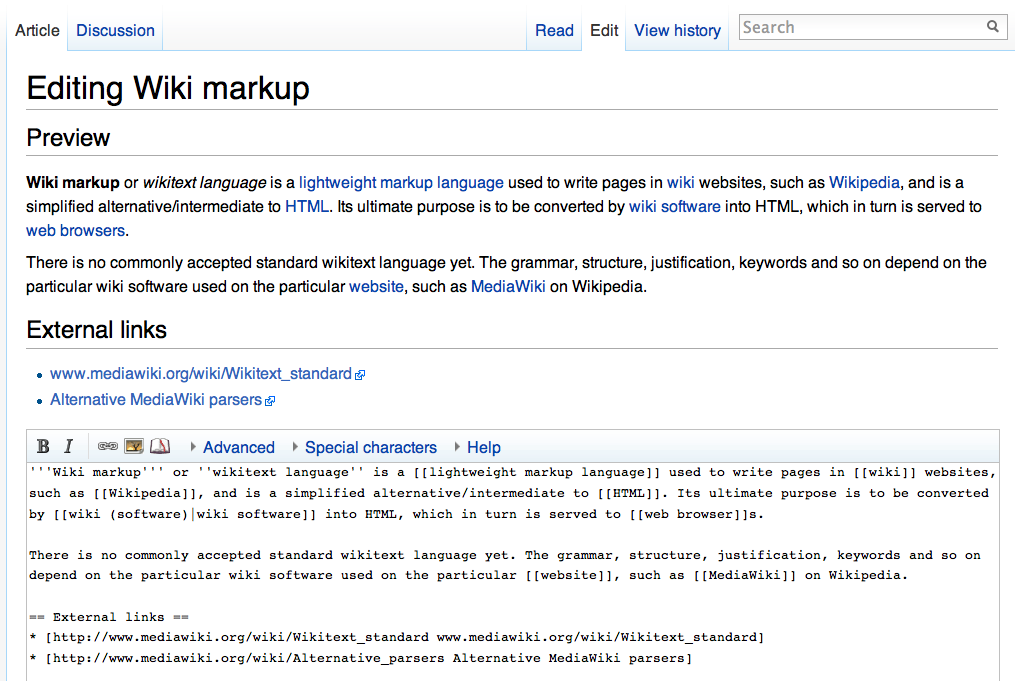|
Chinese Text Project
The Chinese Text Project (CTP; ) is a digital library project that assembles collections of early Chinese texts. The name of the project in Chinese literally means "The Chinese Philosophical Book Digitization Project", showing its focus on books related to Chinese philosophy. It aims at providing accessible and accurate versions of a wide range of texts, particularly those relating to Chinese philosophy, and the site is credited with providing one of the most comprehensive and accurate collections of classical Chinese texts on the Internet. Site contents Texts are divided into pre-Qin and Han texts, and post-Han texts, with the former categorized by school of thought and the latter by dynasty. The ancient (pre-Qin and Han) section of the database contains over 5 million Chinese characters, the post-Han database over 20 million characters, and the publicly editable wiki section over 5 billion characters. Many texts also have English and Chinese translations, which are paired with ... [...More Info...] [...Related Items...] OR: [Wikipedia] [Google] [Baidu] |
|
 |
Digital Library
A digital library (also called an online library, an internet library, a digital repository, a library without walls, or a digital collection) is an online database of digital resources that can include text, still images, audio, video, digital documents, or other digital media formats or a library accessible through the internet. Objects can consist of digitization, digitized content like Printing, print or photography, photographs, as well as born-digital, originally produced digital content like word processor files or social media posts. In addition to storing content, digital libraries provide means for organizing, searching, and information retrieval, retrieving the content contained in the collection. Digital libraries can vary immensely in size and scope, and can be maintained by individuals or organizations. The digital content may be stored locally, or accessed remotely via computer networks. These information retrieval systems are able to exchange information with each ... [...More Info...] [...Related Items...] OR: [Wikipedia] [Google] [Baidu] |
|
Sinology
Sinology, also referred to as China studies, is a subfield of area studies or East Asian studies involved in social sciences and humanities research on China. It is an academic discipline that focuses on the study of the Chinese civilization primarily through Chinese language, History of China, history, Chinese culture, culture, Chinese literature, literature, Chinese philosophy, philosophy, Chinese art, art, Music of China, music, Cinema of China, cinema, and Science and technology in China, science. Its origin "may be traced to the examination which Chinese scholars made of their own civilization." The academic field of sinology often refers to Western scholarship. Until the 20th century, it was historically seen as equivalent to philology concerning the Chinese classics and other Chinese literature, literature written in the Chinese language. Since then, the scope of sinology has expanded to include Chinese history and Ancient Chinese literature, palaeography, among other su ... [...More Info...] [...Related Items...] OR: [Wikipedia] [Google] [Baidu] |
|
 |
Digital Humanities
Digital humanities (DH) is an area of scholarly activity at the intersection of computing or Information technology, digital technologies and the disciplines of the humanities. It includes the systematic use of digital resources in the humanities, as well as the analysis of their application. DH can be defined as new ways of doing scholarship that involve collaborative, transdisciplinary, and computationally engaged research, teaching, and publishing. It brings digital tools and methods to the study of the humanities with the recognition that the printed word is no longer the main medium for knowledge production and distribution. By producing and using new applications and techniques, DH makes new kinds of teaching possible, while at the same time studying and critiquing how these impact cultural heritage and digital culture. A distinctive feature of DH is its cultivation of a two-way relationship between the humanities and the digital: the field both employs technology in the p ... [...More Info...] [...Related Items...] OR: [Wikipedia] [Google] [Baidu] |
 |
Douban
Douban.com (), launched on 6 March 2005, is a Chinese online database and social networking service that allows registered users to record information and create content related to film, books, music, recent events, and activities in Chinese cities. Douban is named after a hutong in Chaoyang District, Beijing where the founder lived while he began work on the website. Douban was formerly open to both registered and unregistered users. For registered users, the website recommends potentially interesting books, movies, and music to them in addition to serving as a social network website such as WeChat, Weibo and record keeper. For unregistered users, the website is a place to find ratings and reviews of media. Douban has about 200 million registered users as of 2013 and some Chinese authors as well as critics register their official personal pages on the site. The platform has been compared to other review sites such as IMDb, Rotten Tomatoes and Goodreads. Founder Douban (B ... [...More Info...] [...Related Items...] OR: [Wikipedia] [Google] [Baidu] |
 |
Digital Humanities
Digital humanities (DH) is an area of scholarly activity at the intersection of computing or Information technology, digital technologies and the disciplines of the humanities. It includes the systematic use of digital resources in the humanities, as well as the analysis of their application. DH can be defined as new ways of doing scholarship that involve collaborative, transdisciplinary, and computationally engaged research, teaching, and publishing. It brings digital tools and methods to the study of the humanities with the recognition that the printed word is no longer the main medium for knowledge production and distribution. By producing and using new applications and techniques, DH makes new kinds of teaching possible, while at the same time studying and critiquing how these impact cultural heritage and digital culture. A distinctive feature of DH is its cultivation of a two-way relationship between the humanities and the digital: the field both employs technology in the p ... [...More Info...] [...Related Items...] OR: [Wikipedia] [Google] [Baidu] |
 |
Text Mining
Text mining, text data mining (TDM) or text analytics is the process of deriving high-quality information from text. It involves "the discovery by computer of new, previously unknown information, by automatically extracting information from different written resources." Written resources may include websites, books, emails, reviews, and articles. High-quality information is typically obtained by devising patterns and trends by means such as statistical pattern learning. According to Hotho et al. (2005), there are three perspectives of text mining: information extraction, data mining, and knowledge discovery in databases (KDD). Text mining usually involves the process of structuring the input text (usually parsing, along with the addition of some derived linguistic features and the removal of others, and subsequent insertion into a database), deriving patterns within the structured data, and finally evaluation and interpretation of the output. 'High quality' in text mining usually ... [...More Info...] [...Related Items...] OR: [Wikipedia] [Google] [Baidu] |
 |
Application Programming Interface
An application programming interface (API) is a connection between computers or between computer programs. It is a type of software Interface (computing), interface, offering a service to other pieces of software. A document or standard that describes how to build such a connection or interface is called an ''API specification''. A computer system that meets this standard is said to ''implement'' or ''expose'' an API. The term API may refer either to the specification or to the implementation. In contrast to a user interface, which connects a computer to a person, an application programming interface connects computers or pieces of software to each other. It is not intended to be used directly by a person (the end user) other than a computer programmer who is incorporating it into software. An API is often made up of different parts which act as tools or services that are available to the programmer. A program or a programmer that uses one of these parts is said to ''call'' that ... [...More Info...] [...Related Items...] OR: [Wikipedia] [Google] [Baidu] |
 |
Wiki
A wiki ( ) is a form of hypertext publication on the internet which is collaboratively edited and managed by its audience directly through a web browser. A typical wiki contains multiple pages that can either be edited by the public or limited to use within an organization for maintaining its internal knowledge base. Its name derives from the first user-editable website called " WikiWikiWeb," with "wiki" being a Hawaiian word meaning "quick." Wikis are powered by wiki software, also known as wiki engines. Being a form of content management system, these differ from other web-based systems such as blog software or static site generators in that the content is created without any defined owner or leader. Wikis have little inherent structure, allowing one to emerge according to the needs of the users. Wiki engines usually allow content to be written using a lightweight markup language and sometimes edited with the help of a rich-text editor. There are dozens of differ ... [...More Info...] [...Related Items...] OR: [Wikipedia] [Google] [Baidu] |
 |
English Language
English is a West Germanic language that developed in early medieval England and has since become a English as a lingua franca, global lingua franca. The namesake of the language is the Angles (tribe), Angles, one of the Germanic peoples that Anglo-Saxon settlement of Britain, migrated to Britain after its End of Roman rule in Britain, Roman occupiers left. English is the list of languages by total number of speakers, most spoken language in the world, primarily due to the global influences of the former British Empire (succeeded by the Commonwealth of Nations) and the United States. English is the list of languages by number of native speakers, third-most spoken native language, after Mandarin Chinese and Spanish language, Spanish; it is also the most widely learned second language in the world, with more second-language speakers than native speakers. English is either the official language or one of the official languages in list of countries and territories where English ... [...More Info...] [...Related Items...] OR: [Wikipedia] [Google] [Baidu] |
 |
Dynasties In Chinese History
For most of its history, China was organized into various dynastic states under the rule of hereditary monarchs. Beginning with the establishment of dynastic rule by Yu the Great , and ending with the abdication of the Xuantong Emperor in AD 1912, Chinese historiography came to organize itself around the succession of monarchical dynasties. Besides those established by the dominant Han ethnic group or its spiritual Huaxia predecessors, dynasties throughout Chinese history were also founded by non-Han peoples. Dividing Chinese history into dynastic epochs is a convenient and conventional method of periodization. Accordingly, a dynasty may be used to delimit the era during which a family reigned, as well as to describe events, trends, personalities, artistic compositions, and artifacts of that period. For example, porcelain made during the Ming dynasty may be referred to as "Ming porcelain". The longest-reigning orthodox dynasty of China was the Zhou dynasty, ruling for a ... [...More Info...] [...Related Items...] OR: [Wikipedia] [Google] [Baidu] |
 |
Hundred Schools Of Thought
The Hundred Schools of Thought () were philosophies and schools that flourished during the late Spring and Autumn period and Warring States period (221 BC). The term was not used to describe these different philosophies until Confucianism, Mohism, and Legalism were created. The era in which they flourished was one of turbulence in China, fraught with chaos and mass militarization, but where Chinese philosophy was developed and patronized by competing bureaucracies. This phenomenon has been called the Contention of a Hundred Schools of Thought. The philosophies that emerged during this period have profoundly influenced East Asian culture and societies. The intellectual landscape of this era was characterized by itinerant scholars, who were often employed by various state rulers as advisers on the way of government, war, and diplomacy. Often, members and traditions of the same school had little in common other than the same influential figure that their beliefs were based on. ... [...More Info...] [...Related Items...] OR: [Wikipedia] [Google] [Baidu] |